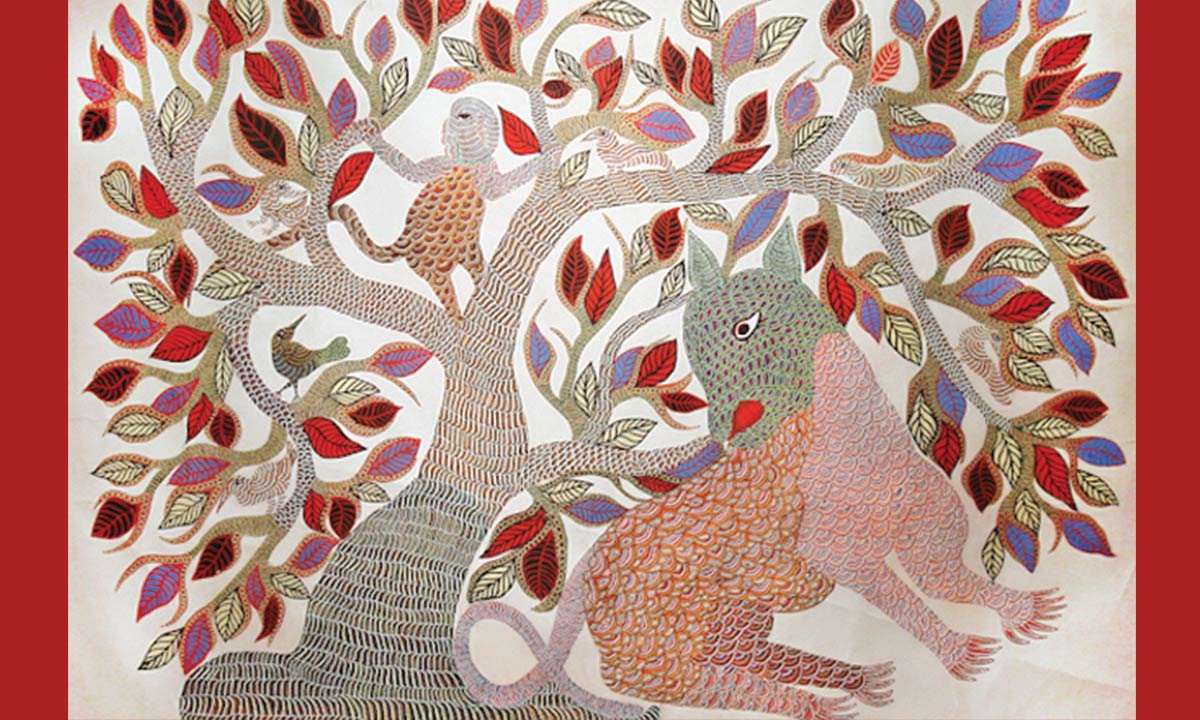What Is Gond Tribal Art

The name 'Gond' is derived from the name of India's largest tribe 'The Gonds'.
Gonds are pre-dominantly found in Madhya Pradesh but they are also present in parts of Maharashtra, Andhra Pradesh, and Chattisgarh
Like all other traditional art forms, Gond painting is also an art form that has passed down through the generations. The Gonds believe that every element in nature, be it mountains, trees or rivers, imbibe a living spirit and painting them is a way of paying respect to those spirits. The art form is very distinct in style with a very strong story telling as its theme.
An intricate patterns of dots and dashes are used to give the impression of motion in the elements drawn. Each artist has their own style of these dots and dashes. Sometimes, a knowing eye will be able to recognise the artist behind a Gond painting based on how the dots and dashes have been used.
Gond art thus seems very similar to the aboriginal art from Australia which also uses dots as its style. Bright colours are also very intrinsic to Gond work and add a lot of drama to the story telling.
Natural pigments have always been used but lack of those in modern times have got the artists to move on to posters colours and canvas. This shift has in fact helped gain more recognition to the art form worldwide.
The first Gond artist to gain national and international recognition was Jangarh Singh Shyamand and the present genre of Gond painting is called 'Janagarh Kalam' after his pioneering style.
Image: Animals Sheltering in the Shade by Jangarh Singh Shyamand [CC BY-SA 4.0]



Leave a Comment